The Baby Boomer cred rolled in from Downtown LA, the San Gabriel Valley and Irvine – a trio of top executives with enough gray in their hair and tailoring on their frames to look distinguished and command some deference in the ballroom of the Hilton Orange County Airport.
The lineup included:
- Gensler Co-Chief Executive Andy Cohen, down from his office at 5th and Figueroa, where he works between far-flung assignments for the global architecture and design firm
- City of Hope Chief Executive Robert Stone, in from Duarte to visit the territory where his organization has staked a $1 billion investment on a new cancer treatment and research center
- FivePoint Holdings’ Chief Executive Emile Haddad, just a short hop from his headquarters in Irvine, where he oversees the largest designer and builder of mixed-use communities in coastal California

The three of them could easily have gotten by on their titles and looks, turning in another one of those hour-long panels designed to give CEOs a safe zone to tout themselves or their companies and products.
These guys took a pass on any such privileges their status might have afforded, choosing instead to engage in a genuine conversation with one another and the crowd, producing a number of light-bulb insights on the future.
Each in his own way offered some clear indicator that all of that Baby Boomer cred hasn’t stopped any of them from striving to understand the Millennials and Gen Zers in the context of the future that all generations face together.
Each in his own way made the point that gaining such understanding is not optional. The message of change as a constant came through loud and clear.
So did the notion that change doesn’t have to be scary – provided, as Haddad put it, we realize the “future needs to be designed differently.”
Each of the executives also shone light on a key good news/bad news aspect of the future we face: It’s all going to happen extremely fast.
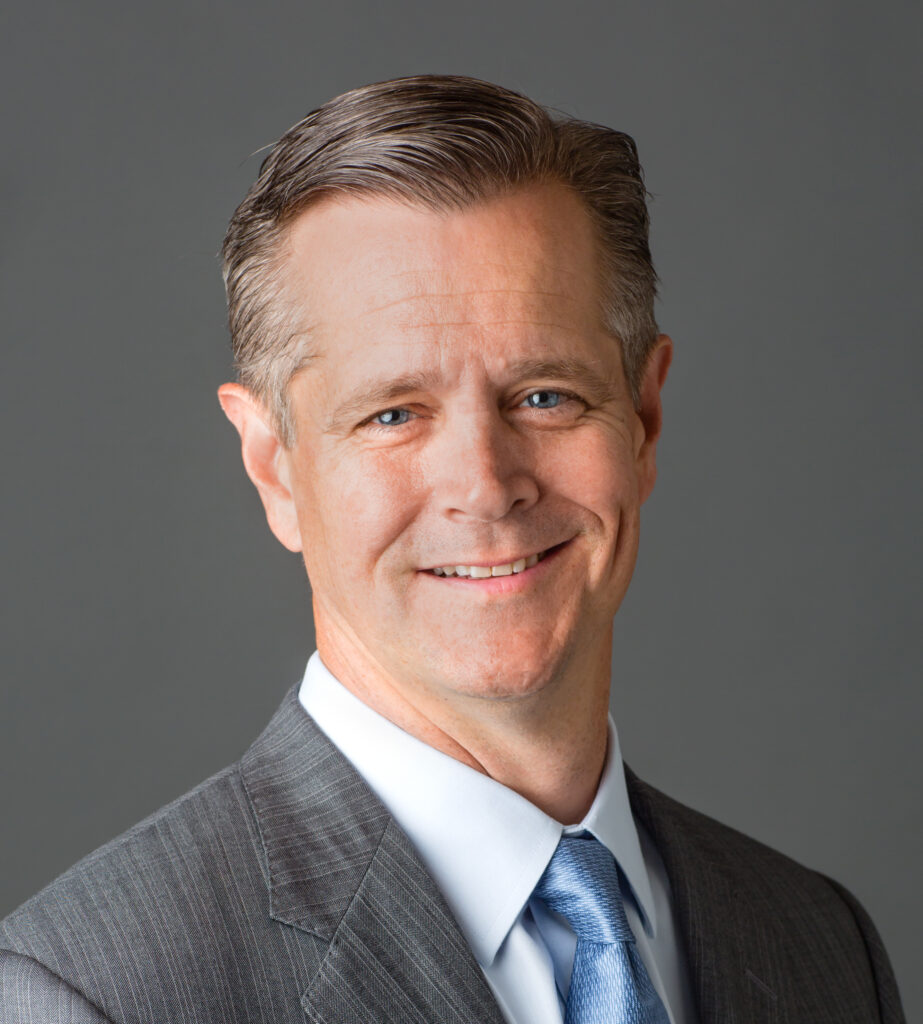
City of Hope’s Stone neatly summed up the sheer speed that now accompanies our daily lives in ways that aren’t necessarily part of our daily consciousness. Stone told the crowd that City of Hope was founded about 100 years ago and settled into its mission as a leader in cancer research around 1950, a time when the universe of medical knowledge doubled about every 50 years.
The pace has sped up, with medical knowledge doubling every 7 years by 1980.
It was doubling every three-and-a-half years by 2010, Stone said.
And it’s expected that the sum total of medical knowledge in the world will double every 73 days by next year.
Cohen offered this jaw dropper: New modes of transportation mean that within 15 to 20 years many real estate developments won’t need to account for parking spaces.

We’ve all seen the scooters, taken an Uber ride and heard about the driverless cars. We all have some idea that some changes are afoot.
You can bet that a lot of folks thought a bit more about it after getting a 15-to-20 year timeline from the co-chief executive of a global enterprise with $1.2 billion in annual revenue and status as Fast Company magazine’s “Most Innovative Company 2018” among its many honors.
Take a look at how much of your world is covered with parking spaces – and think again about the future.
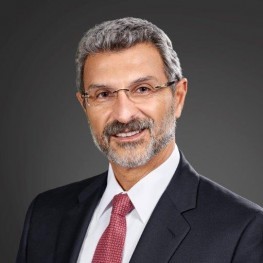
Then Haddad – a literal graybeard these days – offered a thunderclap of an insight on the transition that’s carrying society from the Industrial Age that greeted Baby Boomers to the Digital Age that now drives their careers as well as their children’s and grandchildren’s futures.
The Industrial Age was defined by “the factory, the automobile and the watch,” Haddad said, adding that “we all became slaves to those three machines.”
That’s at the heart of what’s changing, Haddad suggested. Think of where we go, how we get there, and when we work. Now think of WeWork, the gig economy, ride-sharing, flex schedules.
Three pillars of the Industrial Age – the factory, the automobile and the watch – are yielding to the unfinished probing of the Digital Age.
Not necessarily good or bad – but certainly undeniable.
And certainly a banquet for thought from what could have been a run-of-the-mill session at an airport hotel.
Credit the nonprofit OC Forum for coming up with the intriguing subject – Future Cities: Essential Elements for Building and Maintaining a World-Class Quality of Life – and for stocking the panel with some genuine thinkers who also have a talent for putting their thoughts in words.
Give Steve PonTell, chief executive of Rancho Cucamonga-based affordable housing developer National CORE, an assist for keeping the discussion on point and well-paced in front of the crowd of 200 or so business folks, political types, policy wonks and civic spirits.
And note that the entire panel discussion is expected to be available at the OC Forum website at ocforum.org later this week.
Net Zero + 1
It’s also notable that Haddad’s groundbreaking plan to go net zero – as in no net carbon footprint – for the community FivePoint is developing in the Santa Clarita Valley in northern LA County is catching on to the south.
Seems Solana Beach-based Concordia Homes is pitching a net-zero strategy for 550 homes and 762 acres of open space it’s planning under the banner of Safari Highlands Ranch in San Diego County.
Notable to see another outfit picking up the gauntlet, although Concordia Homes’ effort remains small by comparison, even with a $500 million price tag.
FivePoint’s project in LA – known until recently as Newhall Ranch – calls for 21,500 residential units, 11.5 million square feet of commercial space, and more than 10,000 acres of open space, with a total price tag in the $12 billion range.
What Santana Didn’t Say
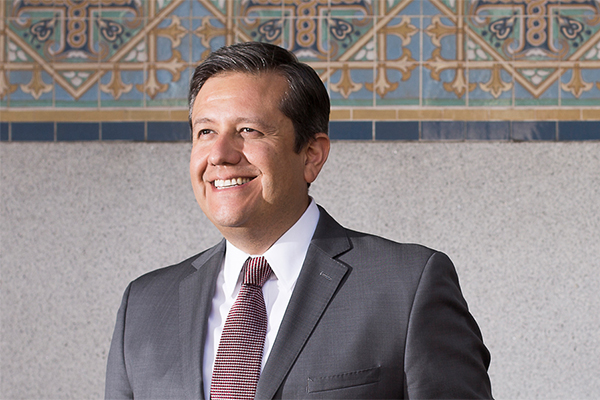 Miguel Santana kept it short but still said plenty last week when he announced plans to step down from the lead role on the citizen’s oversight committee for Proposition HHH, which is supposed to use $1.2 billion raised from taxpayers to address homelessness in the City of Los Angeles.
Miguel Santana kept it short but still said plenty last week when he announced plans to step down from the lead role on the citizen’s oversight committee for Proposition HHH, which is supposed to use $1.2 billion raised from taxpayers to address homelessness in the City of Los Angeles.
The city’s former chief administrative officer offered a clear and succinct farewell from the volunteer post, hitting several key points, including:
- The work has only begun on homelessness.
- The problem is going to get worse before it gets better.
- Taxpayers are rightfully disappointed so far.
- All of that means there is absolutely no cause for any celebrations – no laurels to rest upon – for the elected officials who ultimately direct the program.
Something Santana didn’t say about his decision to step down from the Prop HHH oversight board spoke as loudly as the blunt assessment he actually enunciated.
Santana now works at a day job as chief executive officer of the once-troubled Fairplex, where he’s about two years into a turnaround of a $70 million operation that runs year-round on nearly 500 acres of land in Pomona, with the annual LA County Fair its marquee event. He had a clear opening to make some flannel-mouthed, politically crafted statement about stepping down from the Prop HHH board to zero in on his duties in Pomona, especially with the fair set to begin its annual run this week.
Not a word about that, though – it’s not Santana’s style to duck.
That will be missed when it comes to the challenge of homelessness in LA.
Columnist’s View
Santana didn’t say this, either, but I will – again: LA is going to have to talk about corruption if it ever hopes to make real progress on homelessness.
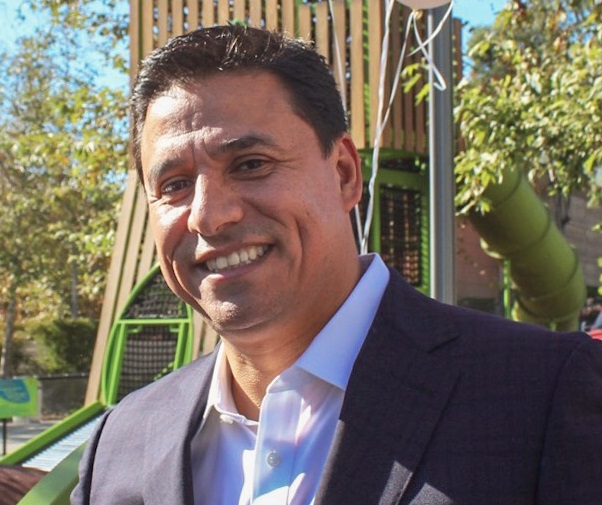 That conversation will be continued in the near future with more coverage of 14th District Los Angeles City Councilmember Jose Huizar’s plans for a homeless shelter at 1426 S. Paloma Street, on the industrial edge of Downtown, among other questionable dealings involving him and his colleagues.
That conversation will be continued in the near future with more coverage of 14th District Los Angeles City Councilmember Jose Huizar’s plans for a homeless shelter at 1426 S. Paloma Street, on the industrial edge of Downtown, among other questionable dealings involving him and his colleagues.
Meanwhile, it’s hard to imagine the spirit of the California Public Records Acts being more corrupted than it has been in recent months at the hands of Huizar.
Here’s a reply with the latest of numerous delays on a request first made under the CPRA eight months ago for the financial data on the 2018 Night on Broadway. The event was the work of Huizar’s office and drew an estimated 250,000 visitors to Downtown, where it peddled sponsorships and charged fees from vendors more than 18 months ago:
Following up on your request under the California Public Records Act, we are close to completing and producing your request and we estimate we will have documents ready for production no later than September 12, 2019.
Anyone else hear the echoes of creative accounting in the choice of words?
Anyone at City Hall realize how sloppy it’s gotten over there?
Something Off Kilter in OC
Some fishy stuff in the corridors of government in OC – lest anyone think LA is the only place with red flags waving over the political landscape.
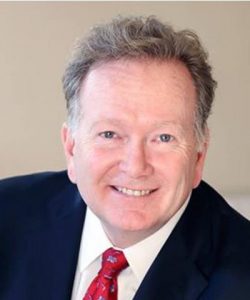
Voice of OC dug into the first layer of this mess with a report that Auditor-Controller Eric Woolery not only died of unknown causes on August 7 in a suburb of Kansas City, Kansas, but had been living there for nearly a year while continuing in office as one of six public officials elected countywide.
That seems to be the first public acknowledgement of the unusual arrangement – besides a blog authored by Woolery’s wife and now widow, Lisa Woolery, who chronicled her family’s move to Kansas at mycaliforniaexodus.wordpress.com.
There’s plenty more to wonder and worry about in OC, though. Woolery had been a bit of a political showboat for years, and that put him at odds with other elected officials, including some members of the OC Board of Supervisors.
Politics as usual, perhaps, but reason for greater concern based on this report from Voice of OC:
“And in June 2018, county supervisors moved to take control of many of Woolery’s powers, including transferring the county’s internal auditors who are watchdogs against fraud and waste. The supervisors also moved forward with efforts to take over 287 accounting and financial control staff positions from Woolery’s office, and cut $1 million from Woolery’s budget.”
Savvy insiders tell SullivanSaysSoCal that the tug-of-war over who oversees the auditors goes back to the 1990s and the tenure of William Popejoy as the county’s chief executive officer. The hard-charging executive removed the auditing staff from the auditor-controller’s purview in the wake of OC’s bankruptcy.
Why have an auditor-controller who doesn’t oversee the auditors?
A legitimate question, and here’s one answer from a source who’s steeped in OC politics and history:
There are six countywide offices in OC: sheriff-coroner; assessor; treasurer-tax collector; clerk-recorder; district attorney; and auditor-controller. The sheriff-coroner, assessor and district attorney are constitutionally mandated by the state. The others, including the auditor-controller, are not; and that means they could be converted from an elective office to an appointed post by the five-member OC board of supervisors.
One well-informed source tells me the supervisors shouldn’t press their luck on the auditor-controller’s post – OC’s electoral history points to a preference among voters to pick the auditor regardless of any squabbles among the pols.
Here’s what I’ll tell OC taxpayers: Watch your wallets anytime the folks in charge of spending your money reach for control of the internal auditors.
Olson Delivers AC to El Segundo
Some LA-OC crossover in the form of Bob Olson, whose Irvine-based R.D. Olson Construction earlier this month completed the AC Hotel Los Angeles South Bay, a workaday submarket that’s adding a bit of rooftop hip.
 The six-story, 180-room establishment comes under the boutique flag of the Marriott brand, with AC Hotel bringing a touch of playfulness to the business district of El Segundo and adding to the local scene overall. It’s being billed as an option for “business and leisure travelers as well as locals,” with “four tech-enabled meeting spaces and El Segundo’s first rooftop bar with exterior benches and a fire table.”
The six-story, 180-room establishment comes under the boutique flag of the Marriott brand, with AC Hotel bringing a touch of playfulness to the business district of El Segundo and adding to the local scene overall. It’s being billed as an option for “business and leisure travelers as well as locals,” with “four tech-enabled meeting spaces and El Segundo’s first rooftop bar with exterior benches and a fire table.”
Olson, who also owns Newport Beach-based R.D. Olson Development, has been one of California’s busiest hotel builders and developers in recent years.
‘Old Towne’ Style in Orange
All the action on hotels hasn’t stopped Olson from a logical extension into residential developments for colleges.
It was less than a week after the AC Hotel opened in El Segundo that R.D. Olson Construction wrapped up work on The K, a 401-bed, 123,562-square-foot student housing project for Chapman University in Orange.
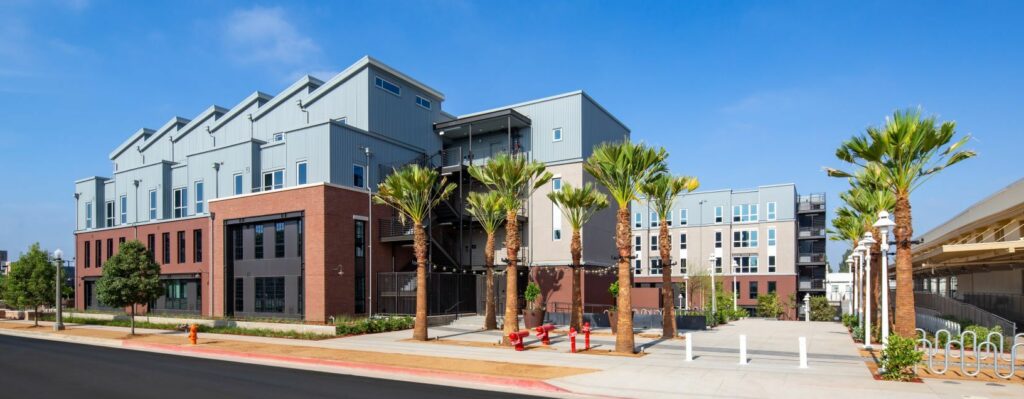
The 110-unit development was designed to fit with “the historic charm of Old Towne Orange.”
That’s no easy feat in a cozy neighborhood that takes enormous pride in the charm that has made it the largest National Registered Historic District in California.
Little wonder The K marks the first newly built student housing added by Chapman in 10 years. Little wonder, also, that “the brick exterior, corrugated metal paneling and exposed structural elements reflect the historic aesthetic” of the area.
And there’s little about the new development that might ring familiar to anyone who spent time in a standard dormitory during their college years. The units at The K “feature a kitchen and either one or two bathrooms, and all except the studios include a living room.”
Correction
An item in SullivanSaysSoCal’s edition of August 20 failed to note that Julie Hill is a member of The Trusteeship, which serves as the SoCal Chapter of the International Women’s Forum, along with Gloria Allred, Karen Caplan and Eileen Padberg.
Northgate Adds Another Gonzalez, Celebrity Chef to Marketing Lineup
More LA-OC crossover thanks to a recent deal struck by Anaheim-based grocery chain Northgate Gonzalez Market to team former Los Angeles Dodgers star Adrian Gonzalez with Chef Marcela Valladolid in a social media campaign to share “their love for food and shopping at Southern California’s premiere Latino grocery store.”
 Valladolid grew up around expert and traditional cooks in Tijuana and went on to study at the Los Angeles Culinary Institute and graduate from the Ritz-Escoffier Cooking School in Paris. She made the leap to celebrity chef as host of “Mexican Made Easy” on the Food Network, as co-host and Emmy nominee of “The Kitchen,” and judge on “Best Baker in America.” Her books include “Fresh Mexico: 100 Simple Recipes for True Mexican Flavor”; “Mexican Made Easy”; “Casa Marcela”; and “Fiestas: Tidbits, Margaritas & More.”
Valladolid grew up around expert and traditional cooks in Tijuana and went on to study at the Los Angeles Culinary Institute and graduate from the Ritz-Escoffier Cooking School in Paris. She made the leap to celebrity chef as host of “Mexican Made Easy” on the Food Network, as co-host and Emmy nominee of “The Kitchen,” and judge on “Best Baker in America.” Her books include “Fresh Mexico: 100 Simple Recipes for True Mexican Flavor”; “Mexican Made Easy”; “Casa Marcela”; and “Fiestas: Tidbits, Margaritas & More.”
Gonzalez was born in the U.S. and raised in Tijuana. He was an All-Star three times during his 15 years in Major League Baseball. He played for the Dodgers from 2012 to 2017, when he became a fan favorite.
Valladolid and Gonzalez will be using social media to tell their followers how they “turn to Northgate Market for every day shopping needs and special occasions throughout the year.” The efforts are expected to include videos, photographs and personal stories as part of a public relations campaign titled “Every Visit Has a Story.”
Best Wishes to Brower
This one is all OC, with best wishes to Martin Brower, who turns 91 this week.
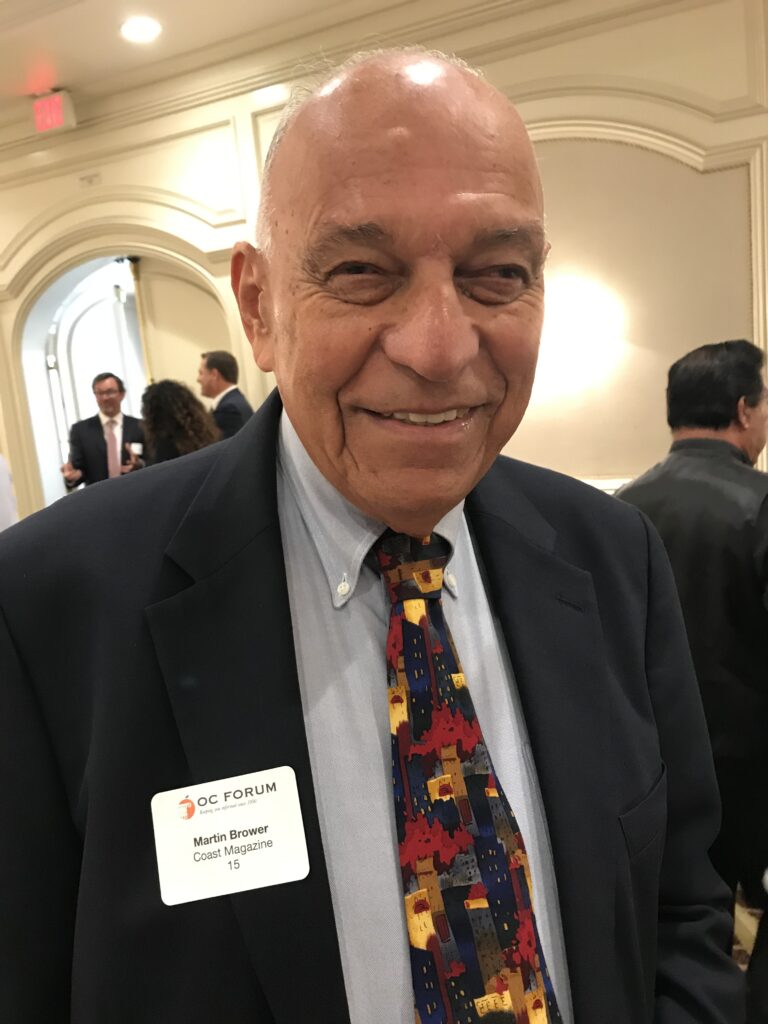
The dean of OC’s journalistic and PR ranks is in his 20th year writing the “Along the Coast” column for Orange Coast magazine.
Anyone who doubts he’s still fit as a fiddle should know that he just passed his driving test with flying colors. Brower credits that recent accomplishment to a long-ago lesson his father taught him: Don’t let the guy behind you drive your car with his horn.
It seems Brower took it as a lesson in personal integrity, too – and here’s guessing that’s one reason he’s roundly liked and admired in OC.
Sullivan Says
Snap does a whole lot more than disappear at the Los Angeles County Museum of Art, which is hosting the mind-bending U.S. debut of Christian Marclay’s “Sound Stories,” featuring various musical pieces created with sounds from Snapchat and accompanied by images from the messaging app.





